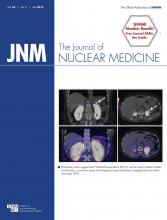It is not what you look at that matters, it is what you see.
—Henry David Thoreau
Intimal arterial calcification is “a pervasive and likely inevitable program that is intimately entwined with aging, atherosclerosis, and cardiovascular disease” (1). Since 1990, vascular calcification has been quantitated (2) and correlated with the likelihood of cardiovascular events (3). The clinical significance of intimal arterial calcification, however, remains controversial. Shaw et al. (4) reviewed the issues in a recent editorial entitled, “The Never-Ending Story on Coronary Calcium: Is It Predictive, Punitive, or Protective?” To understand why this controversy exists, it may be helpful to evaluate the pathophysiology of atheroma.
Calcification of atheroma occurs in inflamed lesions. Lesions are inflamed because low-density lipoprotein (LDL) cholesterol is trapped in the subintimal space, irritating the overlying endothelium and leading to the production of chemotactic factors. The
See page 1019
chemotactic factors attract mononuclear cells to the site (5,6). Mononuclear cells transform to tissue macrophages, enter the lesion, and phagocytize the LDL cholesterol complex. This complex is difficult to catabolize, and in the process of breaking down the protein–lipid complex, oxidized LDL is formed. Oxidized LDL is toxic to the macrophage, resulting in apoptosis or necrosis of the cell. Loss of cell membrane integrity in necrotic cells allows oxidized LDL and numerous proteases to be released into the lesion, increasing the inflammation. The resulting toxic environment induces apoptosis of some adjacent cells, such as smooth muscle cells, causing release of matrix vesicles (7) and further increasing inflammation. The usual clean-up and recycling of elements from these dead cells by efferocytosis is impaired (8) by a combination of the age of the patient and the severity of the inflammation (9).The persistence of the toxic lesion attracts additional monocytes, mast cells, and lymphocytes, which produce factors such as bone morphogenetic protein–2 that lead to the formation of microcalcifications (10).
Microcalcifications are seen in lesions with pathologic intimal thickening and appear as microscopic foci, typically between 0.5 and 15 μm, on histopathology (7). These lesions are too small to be resolved by conventional CT, which has a spatial resolution of about 6 line pairs per centimeter in a high-contrast phantom (11) and about 5 mm in low-contrast objects (12). As lesions progress through multiple cycles of inflammation and healing, the layers of calcification progress from microcalcifications to sheets of calcium large enough and dense enough to be seen on CT.
In addition to calcification, another characteristic of atheroma is increased angiogenesis. Increased vascularity of the lesion enhances delivery of circulating substances to it. Even large molecules such as radioiodinated autologous LDL (13), which has a molecular weight of about 3 × 106, localize in carotid atheroma within hours of intravenous injection (14), likely because of mixing and retention in the large intralesional pool of LDL. Given the localization of large molecules, it is not surprising that small particles such as radiofluoride ions (18F as fluoride ion) also localize in these lesions (15). It is likely that the mechanism of fluoride localization is due to adsorption of the ion on the small dystrophic particles of calcification (with a large surface area).
Identifying these microcalcifications is important, because a finite element analysis of 35,000 microcalcifications in lesions from 22 patients demonstrated that—depending on the size and distance between particle pairs and the orientation of the particles with reference to the tensile axis of the cap—the local tissue stress could increase by a factor of 5 (16), raising the likelihood of cap rupture.
In this issue of The Journal of Nuclear Medicine, Fiz et al. (17) describe the relationship between ionic 18F (18F-NaF) localization in the infrarenal abdominal aorta and the distribution of CT-visible calcification on PET/CT images. The authors observed an average of 6.2 sites of arterial calcification per patient (providing 397 foci of arterial calcification for analysis). There was an inverse correlation between 18F-NaF localization and Hounsfield unit plaque density. In fact, the authors found 18F-NaF hot spots at sites without visible calcification in 86% of patients. 18F-NaF intensity at these sites was higher than that observed at sites with calcification on CT.
The data reported by Fiz (17) suggest that 18F-NaF localizes at sites of calcification that are invisible at the current clinical CT resolution. Although many of these lesions may not be at imminent risk of rupture (because of the distance between foci or their orientation with reference to the tensile strength of the plaque), it seems that these lesions are a seat of intense activity, with an abundance of inflammation, cytokine excess, and ongoing cellular damage. Such active lesions may result in rapid expansion of the necrotic core and progression of plaque, which happen to be strong predictors of eventful plaques (18).
The current investigation is an exciting hypothesis generating study, and we need prospective outcomes data to establish the value of serial 18F-NaF vascular imaging. 18F-NaF imaging might evolve to supplement the overall prognostic importance of the Agatston score by offering lesion-specific prognostic information.
Footnotes
Published online May 21, 2015.
- © 2015 by the Society of Nuclear Medicine and Molecular Imaging, Inc.
REFERENCES
- Received for publication May 4, 2015.
- Accepted for publication May 5, 2015.







